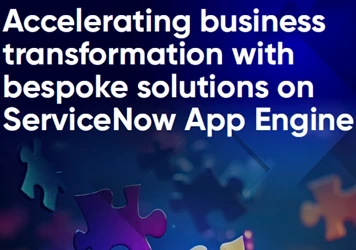How to navigate the road to process improvement
The steps to digital transformation in construction, manufacturing, energy and engineering, and oil and gas sectors
Add bookmarkThis article was originally published on FlowForma
Over the years we've seen businesses continually looking to digitally transform their internal business processes, especially those in the construction, manufacturing, energy and engineering, and oil and gas sectors.
Recently we hosted a webinar in association with the Process Excellence Network (PEX)and our partner Clifford Lee, Vice President at Octagon Value Chain aimed at assisting those in these industries.
Our objective was to demonstrate how to identify the areas and processes that businesses need to digitize and transform, using real life examples. FlowForma's Head of Solution's, Paul Stone, later showcased how process automation software can be used to overcome bottlenecks caused by transparency, visibility and productivity issues.
Laying The Foundations For Process Optimization
To overcome these issues, it's best to start with a deep-dive into the initial process optimization step. By doing this you will understand the weaknesses and gaps in your business system such as a value chain or any parts associated with it. These gaps commonly include outdated, inefficient and possibly even undocumented business processes, which severely damage a business’ ability to maintain high performance in the face of constant change.
Laying the foundation for change. Image: Shutterstock
Also, at this initial first step you should look for critical influence factors. These must be understood and their impact measured before moving forward. Once this is accomplished you can then update and align the policies and business processes with the business strategy. Cross-functional and predictive performance metrics for crucial impact factors can then be developed as required to achieve the desired outcome.
Processes for Optimization
To demonstrate how a process automation solution has benefited an organization in these industries, Paul showcased how the largest road project in the UK, the A14 Integrated Delivery Team, have streamlined and optimized its processes. This project involved almost 2,500 employees across a 31 kilometer stretch of road, with the organization having several key requirements when choosing a digital process automation solution, such as:
- An app for the SharePoint platform
- Assist and drive the project in data capture
- Consistent approach to reporting
- Reduce overhead when dealing with paper
- Ensure correct processes are used
- Something that didn’t require any coding
- An affordable solution
The FlowForma Process Automation tool ticked all of these and more. As a result, the team identified over 76 processes in total for digitization, including:
- Labor procurement - where site managers could request new hires from external agencies
- Permission to dig
- Site visit requests
- Joiners and leavers - where new contractors could be on and off boarded safely onto new work-sites
- Requisitions (material and plant) - where procurement could process new requests for supplies
- Targeted risk monitoring
- Weekly supply chain submissions
Locating areas for digital change. Image: Shutterstock
As a result the organization saved days of effort and vast amounts of money by automating these processes.
Help Is At Hand
If these are process problems you are facing daily, I suggest you view the recording of this webinar to learn more about best practice in tackling these issues head-on.
Something on your mind? Why not reach out to one of our process specialists, to arrange a call around your digital transformation requirements or for a demonstration of how the FlowForma Process Automation tool can empower your employees, to save time and money through digitizing your processes.






























